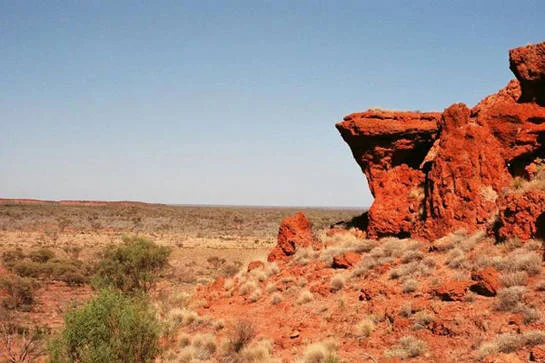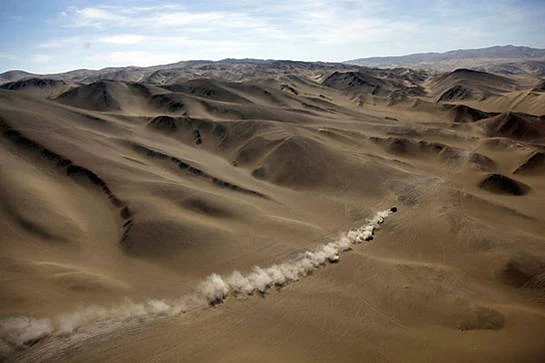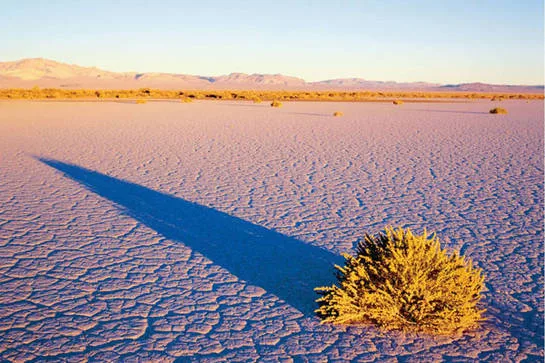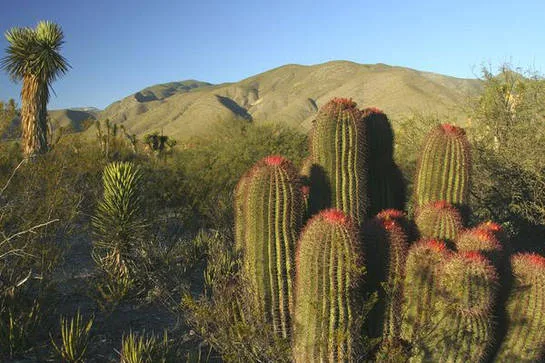Top 10 Largest Deserts in the World Barren and inhospitable territories, drylands whipped by the wind, lands cracked by the scarcity of rain and buffeted by the most extreme temperatures, sometimes cold and sometimes hot. Spaces where human life becomes a feat, when not impossible, and where nature is presented in its most primitive and unspoiled state.
 |
| Top 10 Largest Deserts in the World |
They occupy about a quarter of the earth's surface, being sand, rocky, arid, polar and steppe. However, few places offer a better setting for tranquility, reflection and calm. The loneliness of the desert is so pure that it falls in love. Today we present the 10 Largest Deserts in the World.
1. Antarctic Desert (13,829,430 km²)
 |
| Antarctic Desert, Largest Desert in the World |
It is difficult to conceive that the largest desert in the world is Antarctica. However, the “frozen continent” is the coldest, driest and windiest territory of all those that make up the Earth. In Antarctica it hardly rains, the rainfall in the interior plateau is around 50 mm. per year, while on the coast they fall about 200 mm. of water. The 98% of the surface of rocky ground is covered by ice, so that life in this inhospitable region is reduced to some bacteria, mosses and lichens. The Antarctic fauna proliferates in the coastal areas where penguins, seals, sea lions, gulls, petrels and cormorants, among other species, inhabit.
2. Arctic Desert (13,726,937 km²)
 |
| Arctic Desert, Largest Desert in the World |
For the same reasons as in the case of Antarctica, the Arctic region would be by very little the second Largest Deserts in the World. The northern Arctic is made up of large polar deserts that span Alaska, Greenland, Canada, Iceland, Norway, Sweden, Finland, and Russia. The scarce rainfall and snowfall freeze due to the low temperatures, forming a permanent blanket of frozen snow that covers the great polar cap and the Arctic lands.
3. Sahara Desert (9,065,253 km²)
 |
| Sahara Desert, Largest Desert in the World |
Occupying the entire northern strip of the African continent extends the Sahara, the largest hot desert in the world. Morocco, Western Sahara, Mauritania, Algeria, Tunisia, Mali, Niger, Libya, Chad and Egypt are the countries that the "desert of deserts" dominates to a greater or lesser extent. The Saharawi landscape is very diverse, there are areas with large dunes that can exceed 180 meters, such as those in southern Algeria; steppe and savanna territories, such as those in the southernmost part of the desert that are giving way toSahel; desolate regions, such as the monotonous lunar landscape of the Tanezrouft, on the borders between Algeria, Niger and Mali; "dead" mountains, oasis; and even great rivers like the Nile.
4. Arabian Desert (2,300,000 km²)
 |
| Arabian Desert, Largest Desert in the World |
Almost all of the Arabian peninsula is a great desert. Yemen, Oman, United Arab Emirates, Kuwait, Qatar, Bahrain, Jordan, Iraq, and above all, Saudi Arabia, are the nations through which the fourth largest arid mass in the world extends. A sparsely populated place and where the few population centers arise next to underground wells or springs. It has two large spectacular sand cores, such as Nafud, to the north, where the transversal dunes reach 120 meters; and Rub'al Khali, to the south, the largest dune desert in the world ( 650,000 km² ), a place with hardly any life and where the sandy accumulations reach 250 meters in some places.
Likewise, this desert is a great source of wealth and has oil, gas, phosphate and sulfur extractions. The gazelle, the oryx and cats of the desert are the species most representative animals that inhabit these domains.
5. Deserts of Australia (1,371,000 km²)
 |
| Great Victoria Desert, Largest Desert in the World |
Located primarily in the western plains and inland lowlands, Australia's deserts occupy 18% of the “Aussie” mainland. Mainly composed of ten large arid areas that follow one another, two stand out due to their surface area: the Great Victoria Desert (“Great Victoria Desert”) and the Great Sand Desert (“Great Sandy Desert”). However, the one of greatest interest is the Gibson Desert, since there is the largest population of aborigines in the entire country, as well as the well-known Uluru rock, which together with Kata Tjuta, are two of the great attractions of the area..
6. Gobi Desert (1,300,000 km²)
 |
| Gobi Desert, Largest Desert in the World |
It is one of the most peculiar, interesting and alive deserts on planet Earth. It stretches across southern Mongolia and northern China, and its vast expanse features highly varied landscapes, rich wildlife, and extreme weather. Among the "pearls" that it treasures are some of the most important excavations of fossils and dinosaur eggs in the world, the Flaming Cliffs or Bayanzag; a gorge with perpetual ice, Yolyn Am; an area with impressive sand dunes, in the Gobi Gurvansaikhan national park; a varied native fauna, such as the unique Bactrian two-humped camel, the snow leopard or the argali; and with a nomadic population that "plants" their gers in the most barren places that one can imagine.
All these reasons, and the fact that it is crossed by the Trans-Mongolian railway line, one of the branches of the Trans-Siberian railway whose destination is Beijing, have made the Gobi the desert most desired by travelers.
7. Kalahari Desert (930,000 km²)
Botswana, Namibia and South Africa are the three countries that share another of the great African deserts, the Kalahari. The desert of the “ great thirst ”, a literal translation of Kalahari in Tswano, presents landscape and rainfall characteristics similar to those of the Australian deserts, with the difference that its few inhabitants here are the Khoisan, an important ethnic group that arose from the fusion between the Khoi, dedicated to herding, and the San or Bushmen, expert hunters and gatherers.
Since 1961 it has had the second largest animal reserve in the world, the Central Kalahari Game Reserve, where most of the large African mammals are found.
8. Patagonian Desert (670,000 km²)
 |
| Patagonian Desert, Largest Desert in the World |
Framed by the humid forests of the Andes mountain range, in its western part, and by the Atlantic Ocean in its eastern part, the largest desert in South America, better known as Eastern Patagonia, occupies a large part of southern Argentina and some points of Chili. The main reason to explain the aridity of this region is the natural barrier formed by the high Andean peaks that block the flow of humidity from the Pacific that reaches the interior of the rest of South America. Since 2009 it has become one of the usual venues for the development of the Dakar Rally stages.
9. Syrian Desert (409,000 km²)
 |
| Great Basin, Largest Desert in the World |
To the north of the Arabian peninsula, and as if it were an extension of the Arabian desert, the Syrian desert is located, an arid and rocky landscape, of infinite steppes, small deserts such as Palmyra and large oases, such as that of Ghouta, next to which Damascus, the Syrian capital, has flourished. Their dominions include the north of Jordan and Iraq, Syria and the southeast of Turkey, being marked its limits by the valley of the Orontes in the western part and by the river Euphrates in the eastern side. One of the most interesting landscapes of this desert is theJabal al-Druze, an elevated region of volcanic origin located in southern Syria that reaches 1,800 meters in height.
10. Chihuahuan Desert (362,600 km²)
 |
| Chihuahuan Desert, Largest Desert in the World |
The largest desert in North America is shared by Mexico and the United States. It occupies most of the states of Nevada and Utah, and some smaller areas of California, Idaho, Oregon, and Wyoming. Bounded to the west by the Sierra Nevada mountain range and to the east by the Wasatch Mountains. It is a cold and dry desert, in which salt flats and plateaus with a continental climate abound. To the south, towards Mexico, there are the Mojave and Sonora deserts, whose climate is warmer than that of the Great Basin. After the border, it extends through the Mexican states of Chihuahua and Cohauila.
